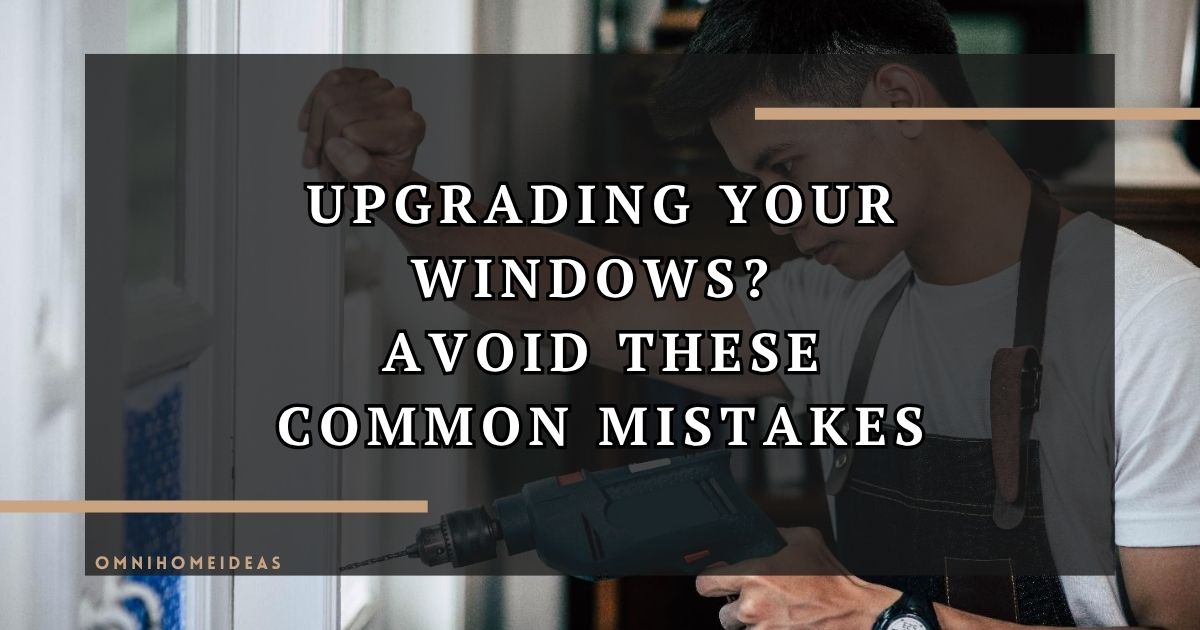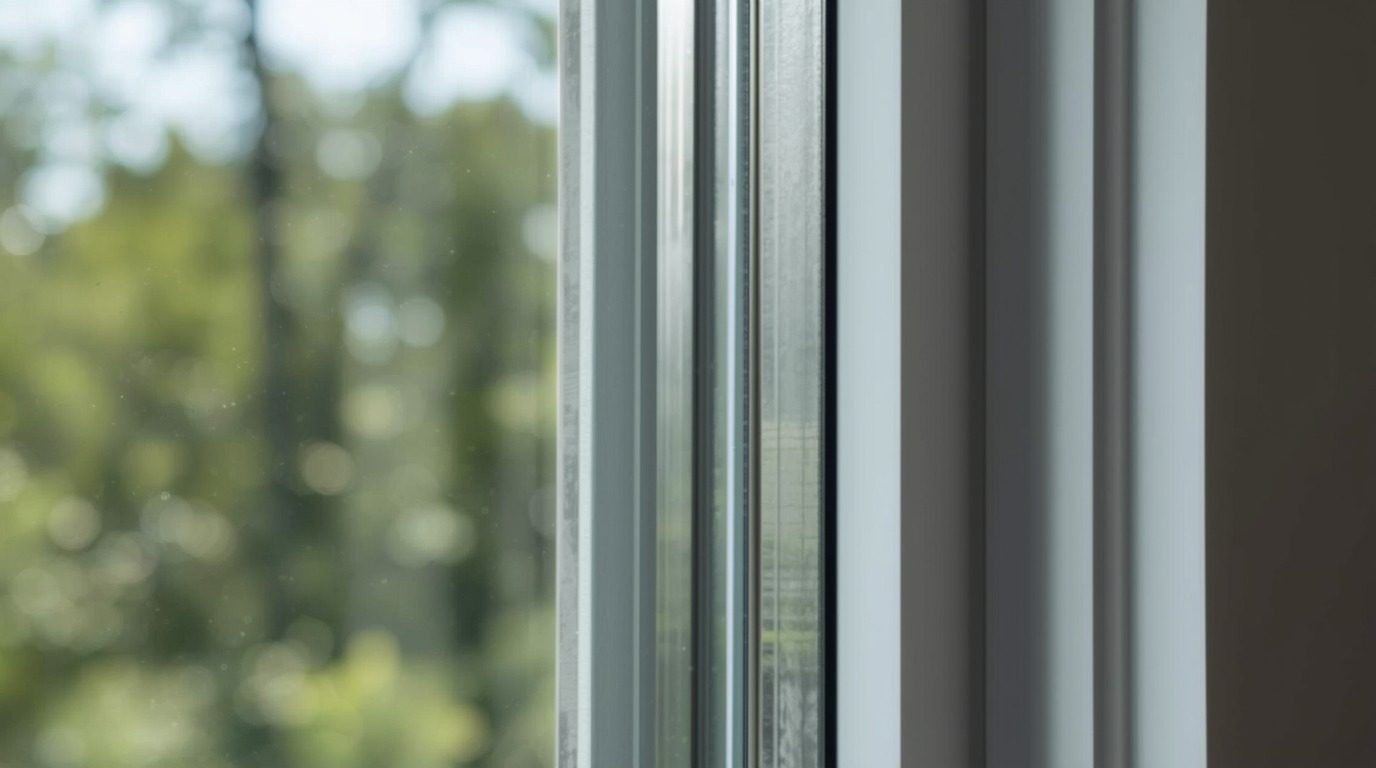Most homeowners approach window upgrades the same way they shop for sofas. They lead with style. They ask about price. They want it to look better, feel newer, and fit the Pinterest board they made at 2 a.m.
That is how you end up with a window that looks great in photos and leaks by February.
Here is what actually matters when you are thinking about new windows.

A New Window Isn’t Automatically a Better Window
Swapping out old windows for new ones does not guarantee better performance. A sleek finish and fresh caulking might hide poor insulation, flimsy construction, or corners that were cut to hit a price point.
Many budget-friendly windows are made with hollow vinyl frames, minimal reinforcement, and seals that fail within a few seasons. They might come with glossy marketing and showrooms that make them look high-end. But if you are not reading the performance specs, you are not upgrading. You are just replacing.
A true upgrade means lower energy costs, fewer drafts, quieter rooms, and long-term durability. Without those, you are just changing how the trim looks.
What You Should Be Asking Instead
Forget aesthetics for a moment. Ask the installer or supplier these questions:
- What is the U-factor of this window?
- Is the frame multi-chambered or foam-filled?
- How is the glass sealed?
- What is the warranty on performance, not just product?
- Has the window been tested and certified by third-party labs?
These questions separate the sales pitch from the technical reality. They also help you compare brands fairly. A cheap vinyl window and a fiberglass one might look the same in a catalogue, but their specs will tell a very different story.
Why Frame Material Matters More Than Colour

The frame is what holds everything together. It needs to resist warping, handle thermal expansion, and hold a consistent seal year after year.
Vinyl is common because it is cheap and easy to shape. But cheap vinyl flexes. That movement breaks seals. Broken seals mean drafts, condensation, and higher energy bills.
A well-made window uses reinforced vinyl, aluminum-clad wood, or fiberglass frames. Fiberglass, for example, has a thermal expansion rate very close to glass, which means it expands and contracts at the same pace. That keeps seals intact over decades. Aluminum-clad wood offers the durability of metal outside with the warmth of wood inside. These materials cost more upfront but hold up over decades, not just seasons.
Homeowners often fixate on colour because they are thinking resale. But the truth is that a frame’s performance matters far more than whether you choose “espresso” or “charcoal” finish. A well-performing frame is what keeps your home comfortable and efficient.
Glass Isn’t Just Glass
Most people stop at “double-pane” or “triple-pane” and assume that is enough. But the layers mean very little if the airspace between them is not sealed properly.
Look for:
- Low-E coatings that block infrared light and reduce heat transfer
- Argon or krypton gas fills that add insulation
- Warm-edge spacers that reduce condensation risk
- Multiple sealing layers to prevent leaks
If you want to verify actual performance, do not take the salesperson’s word for it. Check if the window model is listed in Natural Resources Canada’s certified products database. If it is not listed, it has not been tested to meet national standards.
Think of it this way: triple-pane glass without gas fill is like a puffer jacket without insulation. Bulky but not actually warm.
Installation Isn’t Secondary

You can buy the best window in the world and still lose performance if the install is rushed or sloppy. Gaps around the frame, poor insulation, or uneven alignment can wreck thermal efficiency and lead to long-term problems like water damage or mold.
Make sure the installer is certified. Ask how they insulate around the frame. Confirm they will check for rot or water damage before they start. And do not be afraid to ask about their process step by step. A reliable contractor should be able to explain how they prevent drafts, water intrusion, and shifting over time.
Bad installation is one of the top reasons new windows underperform. You do not want to spend thousands on windows only to have all that energy savings vanish into the gaps.
The Cost of Doing It Wrong
Bad windows cost more than good ones. Not at the start, but over time. You will pay more in heating, more in cooling, more in repairs, and more to replace them again when the seals fail early.
Cut corners once, and you will pay for it twice. Sometimes three times.
Energy loss through inefficient windows is not small. Natural Resources Canada estimates that 25 to 30 percent of a home’s heating and cooling is lost through windows and doors. That means if your windows are poorly made or poorly installed, you are essentially paying to heat or cool the outdoors.
Energy Ratings You Should Actually Pay Attention To
Performance is not about buzzwords like “eco-friendly” or “green.” It is about measurable ratings.
- U-Factor: Lower is better. It measures how well a window insulates.
- Solar Heat Gain Coefficient (SHGC): Tells you how much solar radiation passes through. Higher can be good in cold climates, lower is better in hot ones.
- Visible Transmittance (VT): The amount of light that passes through. Important for natural lighting without sacrificing insulation.
- Air Leakage (AL): How much air can slip through the seams. Lower means fewer drafts.
These numbers are not fine print. They are the difference between a comfortable home and one that constantly feels drafty no matter how high you crank the thermostat.
The Noise Factor Nobody Talks About
Noise is energy. Poorly insulated windows let it through just as easily as they let heat escape. If you live near traffic, flight paths, or even just noisy neighbours, window performance directly affects how much of that sound invades your home.
Laminated glass or triple-pane windows with gas fills can cut noise dramatically. You will not just feel the difference in comfort but in your mental health. A quieter home is a calmer one.
This is something many homeowners forget to ask about until after the fact, when they are still waking up to the sound of delivery trucks outside.
Climate and Orientation Matter
A window that performs well in one region might be a poor fit in another. A window rated for Toronto might not work as effectively in Calgary. Cold climates demand a lower U-factor, while hot sunny climates need a lower SHGC to block out heat.
Even within the same house, orientation matters. South-facing windows might benefit from higher SHGC to capture passive solar heat in winter, while west-facing ones may need more shading to avoid overheating in summer.
Choosing the right window is not one-size-fits-all. It is about matching product to place.
Why Local Manufacturing Is Worth It
Imported windows might look like a deal, but they often are not designed for Canadian weather extremes. A product made for mild European winters or Southern U.S. climates may not hold up when Ontario hits minus 20. Golden Windows, for example, manufactures in Ontario with Canadian weather in mind. Their products are tested for local performance and backed by clear, transparent warranties. You are not just buying a window; you are buying accountability.
Longevity vs Quick Fix
Think in decades, not seasons. A true window upgrade should last twenty to thirty years with consistent performance. If you are replacing windows every ten years, you are not upgrading, you are patching.
Quality windows also add to resale value. Buyers notice energy-efficient upgrades, and many will pay more for a home that promises lower bills and less maintenance. Cheap windows might get you through a staging day, but they will not hold up under inspection.
Final Word
You do not need windows that just look new. You need windows that perform. Windows that make your home quieter, more comfortable, and more efficient.
Skip the showroom sparkle. Get into the specs. Choose quality once so you do not have to think about it again.

